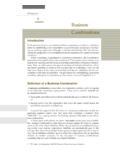Transcription of sheb ch07.QXD 10/26/09 10:44 PM Page 221 Chapter 7
1 PreviewAfter reading this Chapter you should be able to: Describe the elements of empowering clients. Identify motivation principles and skills. Explain the stages of change. Describe the principles and strategies of motivational interviewing . Describe the principles of cognitive behavioural counselling. Identify how thinking affects behaviour and emotions. Describe how to assist clients to make changes in their thinking. Describe how to assist clients to make behavioural changes. Describe principles and techniques for brief : MOBILIZING STRENGTHSFOR CHANGEINCHAPTER2 THE CONCEPT OFEMPOWERMENTWAS DESCRIBED AS THE PROCESS OF HELPING clients discover personal strengths and capacities so that they are able to take control of theirlives.
2 The foundation for empowerment in counselling is the belief that clients are capableand have a right to manage their own lives. Thus, an empowerment attitude focuses on thecapacities and strengths of clients. Empowerment values and methods challenge counsellorsto forgo any need to control clients by taking on an expert role that puts clients in positionsof dependency. Giving priority to empowerment constrains counsellors from hiding behindprofessional jargon. Moreover, counsellors who empower demystify the counselling processthrough open and non-jargonistic discussion with clients of their methods and 7 Empowerment and Change: The Purpose of 10/26/09 10:44 PM Page 221222 Chapter 7 Self-determination, an important component of client empowerment, is promoted byhelping clients recognize choices and by encouraging them to make independent should not do for clients what clients can and should do for themselves.
3 Whenempowerment is the priority, clients become the experts, and there is collaboration andshared decision making within the professional relationship (Sheafor & Horejsi, 2008,p. 79). McWhirter (1991) asserts that the potentially empowering aspects of counsellinginclude an underlying belief in basic human potential and in clients ability to cope withtheir life problems, a collaborative definition of the problem and therapeutic goals, skillenhancement and development, recognition and analysis of systemic power dynamics andan emphasis on group and community identity (p.)
4 226).Often clients come from disadvantaged and marginalized groups where they have been beaten down by oppression, poverty, abuse, and other harmful life experiences. They wantbetter lives for themselves and their families, but they feel powerless to make the necessarychanges. Some clients have a pervasive sense of failure and feel different from and rejectedby other people (Sheafor & Horejsi, 2008, p. 422).Sometimes powerlessness arises from negative self-evaluation and low self-esteem orfrom lack of confidence in one s ability to alter one s life, but sometimes the systems that areset up to assist clients are themselves oppressive and contribute to powerlessness.
5 Describingthe welfare system, Carniol (1995) observes, As for the clients, evidence shows that theyoften find themselves blamed for the problems they face. They find they don t get the helpthey need or they don t get nearly enough to make a difference or they get cut off (p. 3).Racism and other prejudices may also deny clients access to jobs and resources such asadequate housing, a reality which reminds counsellors that they have some responsibility toadvocate for progressive system and social policy changes. Ben Carniol, a Canadian socialwork educator, offers this challenge: Social and economic and environmental justicedemands a transformation of power, including a basic democratization of wealth-creatingactivities so that the practice of democracy comes within the reach of everyone, ratherthan being manipulated by those who now dominate the heights of our political and socialstructures (1995, p.)
6 158).Client self-determination is enhanced when clients have more choices. This perspec-tive draws counsellors into broader activities, including working to identify and remove gapsand barriers to service and encouraging more humane and accessible policies and addition, as McWhirter (1991) argues, empowerment requires that clients gain somedegree of critical awareness of systemic power dynamics (p. 225). One way counsellors canachieve this end is to provide clients with information on groups and organizations whoseefforts are directed toward changing problematic elements of the counselling process itself offers empowerment to clients.
7 The beginning phaseoffers many clients a unique opportunity to explore their situation and their listening skills help clients bring long-forgotten or misunderstood feelings to thesurface. Ventilation of feelings can energize clients, and it can lead to spontaneous insightinto new ways of handling problems that seemed insurmountable. For some clients thework of counselling is finished at this 10/26/09 10:44 PM Page 222223 Empowerment and Change: The Purpose of CounsellingIn the remainder of this Chapter strategies for motivating clients and helping themdevelop and sustain change will be explored.
8 The stages of change model(Prochaska &Norcross, 2001) is based on the notion that people go through different motivational stages,each of which requires different counsellor strategies for success. motivational interviewing (Miller & Rollnick, 2002) is a tool for helping clients to deal with the ambivalence thatkeeps many of them from making desired and successful changes. Cognitive behaviouralcounselling is a collaborative (counsellor and client) approach to helping clients makechanges in the three major psychological domains: thinking, behaviour, and AND STAGES OF CHANGECLIENTS MAY HAVE MADE CONSCIOUS DECISIONS TO CHANGE AND THEIR MOTIVATION M AY B Ehigh, but they may also have mixed feelings about replacing established behaviour with newways of behaving.
9 Sometimes change involves a selling job, but the results are better whenclients, not counsellors, do the selling. Clients need to convince themselves that the bene-fits of change outweigh the risks, and they need to develop positive attitudes and beliefs abouttheir capacity for change. Counsellors with a strengths perspective believe in the capacity oftheir clients to change, and this belief in them can be a powerful motivating and drives the change process. Johnson, McClelland, and Austin(2000) identify three factors important for motivation: the push of discomfort, the pullof hope that something can be done to relieve the problem or accomplish a task, andinternal pressures and drives toward reaching a goal (p.)
10 133). Thus, not only must clientswant to change, but they must also believe in their capacity for change. Change is stress-ful; it requires risk and energy to give up established patterns of behaviour and differ in the extent to which they have the skill or energy to take the associatedrisks. The following are the essential elements of high to engage in the work of to devote energy and resources to the change to sustain effort over time and in the face of self-esteem to sustain the courage to change (Shebib, 1997, p. 252)Counsellors can assess clients based on these four elements, and then design appro-priate strategies to meet each client s particular need.
















